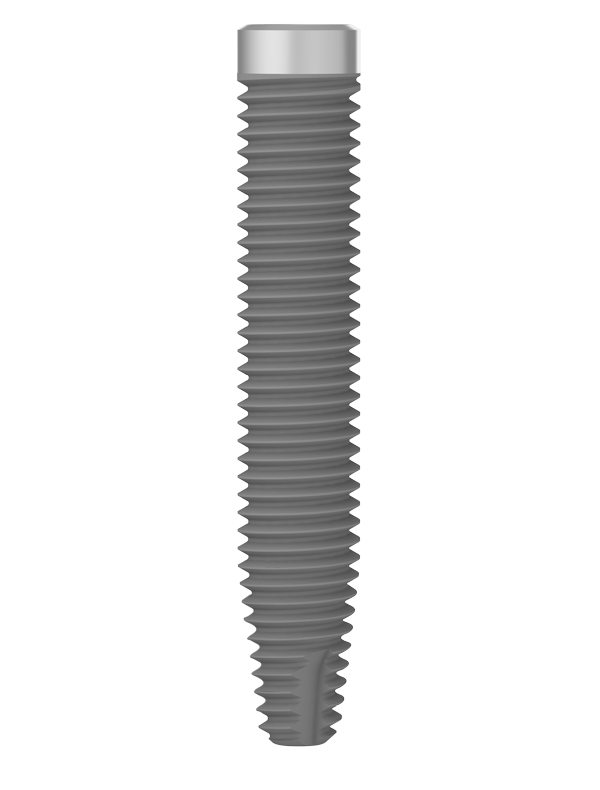PTERIGO
IMPLANT DESIGN
The posterior area of the maxillary tuberosity is closely connected at the bone level with the pterygoid process of the sphenoid and with the wall of pyramidal process of the palatine, thus representing an appropriate anatomical structure, characterized by dense bone, suitable to support dental implants.
The pterygoid implant is an endosseous fixture, of 15-18 mm in length, positioned in the region of the superior maxillary tuber; the greater length of the implant, if compared to a standard fixture, allows to reach the pterygoid fossa and therefore the homonymous sphenoid abutment on which the anchoring takes place of the apical part of the implant. The pterygoid implant is generally used together with the placement of other fixtures or teeth placed in the mesial area with respect to the maxillary sinus.













